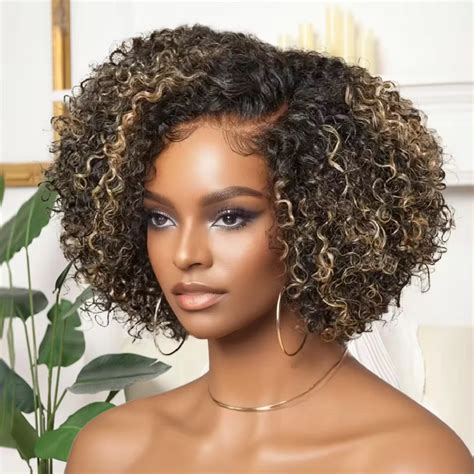Why French Powder Wigs Matter
French powder wigs, also known as periwigs, played a pivotal role in shaping the fashion and culture of the 18th century. They symbolized wealth, status, and extravagance, becoming an integral part of the aristocratic and royal wardrobe.

10 Intriguing Facts About French Powder Wigs
- Exorbitant Cost: These wigs were incredibly expensive, with some costing up to 200 pounds, equivalent to over $25,000 today.
- Lavish Adornment: French powder wigs were often adorned with ribbons, lace, and feathers, creating elaborate and attention-grabbing hairstyles.
- Tall and Wide: They were characterized by their immense height and width, ranging from 2 to 4 feet tall and up to 3 feet wide.
- Powdered Perfection: These wigs were dusted with white powder, usually made from rice flour, starch, or wheat flour, to create a cloud-like appearance.
- Lice Infestation: The powdered wigs provided an ideal environment for lice, which became a persistent problem despite regular combing and delousing.
- Symbol of Status: Wigs became a visible indicator of social hierarchy, with the most elaborate and expensive wigs reserved for the elite.
- Care and Maintenance: Powder wigs required meticulous care, involving regular combing, powdering, and restyling, which could take hours.
- Fragrant Accessories: Wigs were often scented with flowers, herbs, and perfumes to mask unpleasant odors.
- Fashion Revolution: French powder wigs sparked a fashion revolution in Europe, influencing hairstyles and accessories for centuries to come.
- Historical Context: They were an integral part of the Rococo era, characterized by opulence, frivolity, and a fascination with nature.
How French Powder Wigs Benefits
French powder wigs offered several benefits to their wearers:
- Fashion Statement: They provided a statement-making accessory, attracting attention and admiration.
- Status Symbol: They indicated high social status and wealth, enhancing the wearer’s reputation.
- Camouflage: They could conceal baldness, thinning hair, or other hair-related issues.
- Hair Protection: They shielded the wearer’s natural hair from the elements and harsh styling techniques.
- Hygiene Concerns: The powdered wigs helped absorb sweat and oil, reducing the need for frequent washing.
Tips and Tricks for Using French Powder Wigs
- Proper Fit: Ensure the wig fits comfortably and securely on your head.
- Regular Combing: Comb the wig gently with a wig brush to prevent tangles and maintain its shape.
- Powder Application: Apply the powder evenly over the wig using a powder puff or wig brush, taking care to avoid caking.
- Storage: Store wigs in a cool, dry place when not in use to prevent damage.
- Professional Care: Consider seeking professional cleaning and maintenance services to preserve the wig’s appearance and longevity.
Common Mistakes to Avoid with French Powder Wigs
- Over-Powdering: Avoid using excessive powder, as this can make the wig appear dull and heavy.
- Improper Combing: Combing the wig with a regular brush can damage its delicate construction.
- Washing: Never wash French powder wigs with water or shampoo, as this can ruin the wig’s form and powdering.
- Heat Styling: Avoid using heat styling tools on powder wigs, as this can melt the powder and damage the hair.
- Unhygienic Practices: Refrain from sharing powder wigs or using borrowed wigs without proper cleaning to prevent the spread of lice or other infestations.
Creative Applications for French Powder Wigs
Cosplay and Costume: French powder wigs are essential for creating authentic historical costumes for cosplay, reenactments, and theatrical productions.
Fashion Inspiration: The exaggerated and whimsical designs of French powder wigs can inspire modern fashion designers to create innovative and unconventional hairstyles.
Interior Design: Powder wigs can be used as unique decorative elements in interior design, adding a touch of historical grandeur to any space.
Artistic Inspiration: The elaborate and imaginative nature of French powder wigs provides a rich source of inspiration for artists, photographers, and designers.
Tables
| Characteristic | Description |
|---|---|
| Height | 2 to 4 feet |
| Width | Up to 3 feet |
| Cost | Up to £200 (equivalent to $25,000 today) |
| Powder | Rice flour, starch, or wheat flour |
| Benefit | Explanation |
|---|---|
| Fashion Statement | Attracted attention and admiration |
| Status Symbol | Indicated high social status and wealth |
| Camouflage | Concealed baldness or thinning hair |
| Hair Protection | Shielded natural hair from elements and styling |
| Hygiene Concerns | Absorbed sweat and oil, reducing need for frequent washing |
| Tip | Purpose |
|---|---|
| Proper Fit | Ensures comfort and security |
| Regular Combing | Prevents tangles and maintains shape |
| Powder Application | Creates cloud-like appearance |
| Storage | Preserves wig’s appearance and longevity |
| Professional Care | Maintains wig’s health and integrity |
| Mistake | Explanation |
|---|---|
| Over-Powdering | Makes wig dull and heavy |
| Improper Combing | Damages wig’s delicate construction |
| Washing | Ruins wig’s form and powdering |
| Heat Styling | Melts powder and damages hair |
| Unhygienic Practices | Spreads infestations |
